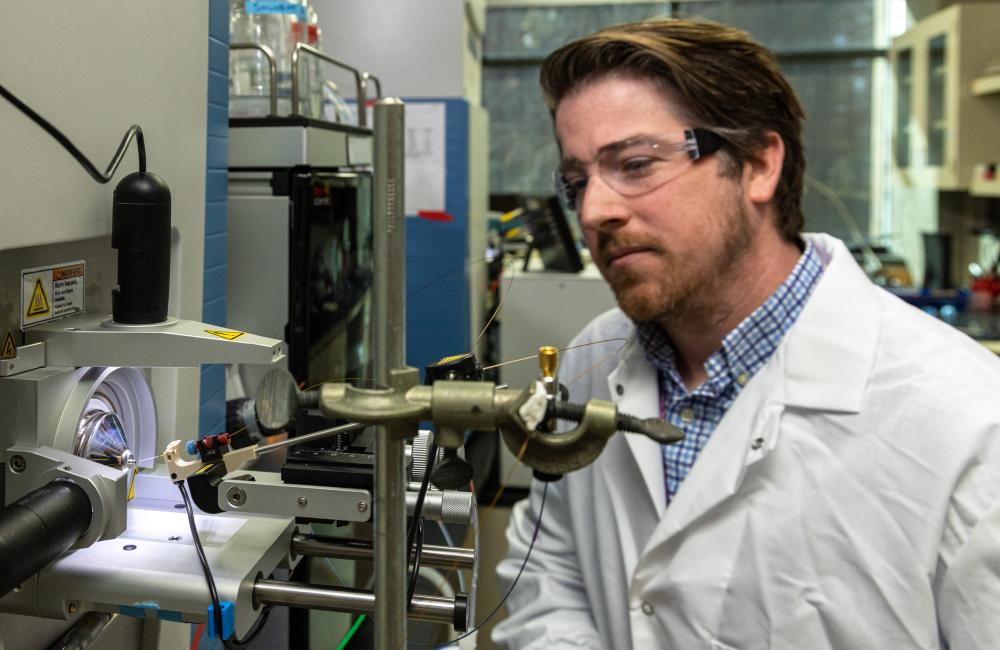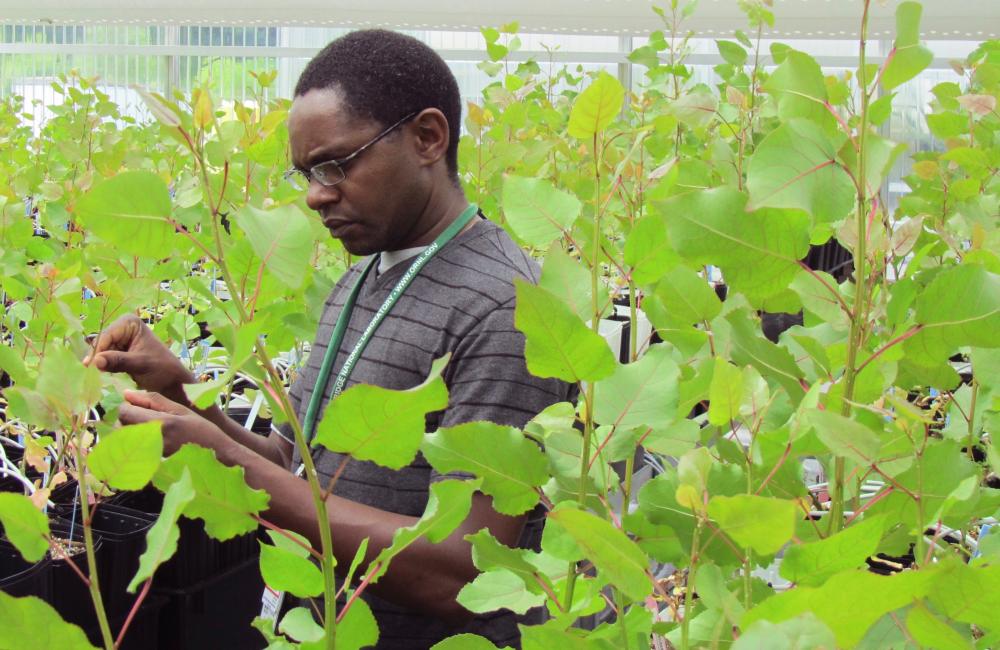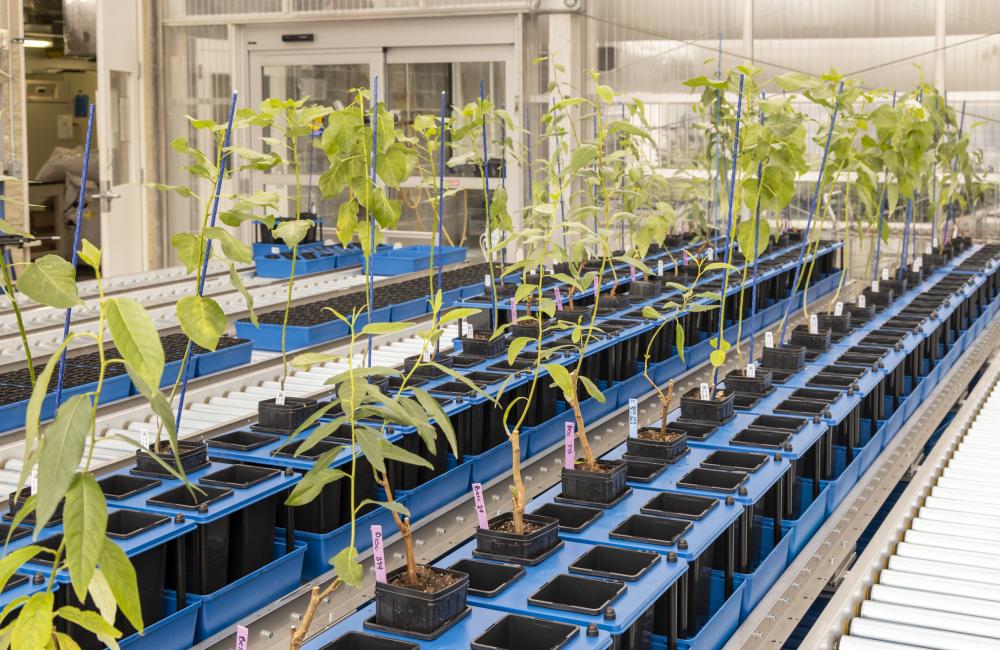
Addressing a critical bottleneck in biology
Although DNA sequences are readily available, connecting genes to desired traits in plants and microbes and determining the ecosystem effects of those gene functions is a challenge requiring extensive, integrated capabilities —from synthetic biology to largescale experiments in natural environments. Oak Ridge National Laboratory is working to foster technological advances and accelerate identification of gene function, across species, across scales, and at low cost.
Molecules, cells and organisms—Evaluating gene effects through protein synthesis, promoter characterization, transposon library generation, and development of genetic systems for non-model organisms
Communities, synthetic environments—Defining and characterizing gene function in groups of organisms in controlled laboratory settings, from microfluidic platforms to greenhouse-based studies
Ecosystems, natural environments—Measuring and characterizing organisms across diverse natural biomes to enable population-scale studies and verification of gene function in the field
Analytical imaging and characterization—Developing and using new technologies for phenotypic characterization of molecular and cellular systems
High-performance computing and simulation—Driving knowledge integration and discovery for defining gene function through supercomputing and explainable artificial intelligence
Comprehensive Capabilities
Supercomputing and simulation
Applying supercomputing and artificial intelligence to mine massive data sets, yielding new insights; modeling processes from molecular to ecosystem-scale
Data analytics
Collecting, assembling, and interpreting real-time data through remote sensing and automated measurement capabilities
Imaging and neutron science
Analyzing plants and microbes using mass spectrometry, imaging-based tools, stable isotope capabilities, and two of the world’s most powerful sources of neutrons
Synthetic biology
Developing new methods and tools to bioengineer organisms, including non-model microbes; creating synthetic environments such as microfluidic platforms
Population-scale studies
Leveraging genome-wide data sets and quantitative trait locus analyses to identify candidate gene mechanisms
High-throughput phenotyping
Automating measurement of a range of key plant characteristics using the most diverse suite of imaging capabilities of any system worldwide
‘Omics measurements
Profiling and quantifying proteins and metabolites from diverse biological samples to understand molecular mechanisms at organism, biome, and ecosystem scales
Large-scale natural environments
Evaluating organism characteristics and ecosystem processes through highly-instrumented ecosystem experiments, common gardens, and field sites
Recent Impacts
Identified gene networks in poplar trees that control callus formation and analogous genes in humans that control tumor formation, advancing understanding for bioenergy and cancer research
Discovered the gene that controls an important symbiotic relationship between plants and soil fungi and successfully facilitated the symbiosis in a plant that typically resists it
Demonstrated a way to isolate and grow targeted bacteria using genomic data, making strides toward resolving the grand challenge of uncultivated microbial “dark matter,” which remain unstudied in the laboratory
Pinpointed the genetic variation (single nucleotide polymorphism) that triggers a metabolic pathway in poplar trees and validated the discovery by inserting the gene and producing the same function in rice, where this pathway is not native













